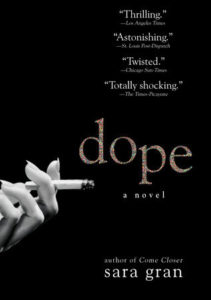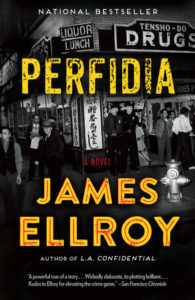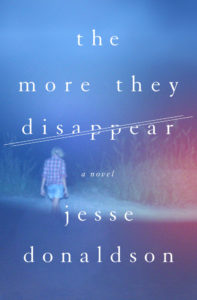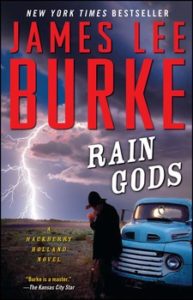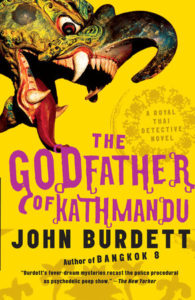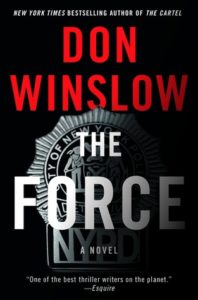Last year in the United States, over 72,000 people died after overdosing on drugs. That’s more than the number of Americans who died from gun violence or car accidents, and it should come as no surprise that for the first time in decades, the life expectancy of the average American is dropping. Heroin was the cause of almost 16,000 of those overdose deaths, but the numbers are even more staggering—rising to nearly 60,000 deaths—once you figure in synthetic opiates and semi-synthetic opiates like fentanyl and prescription painkillers. The word “epidemic” almost seems too modest for what we’re experiencing, as each week, news outlets report the latest toll and social media feeds mark the deaths of neighbors and loved-ones, while communities tear themselves apart trying to figure out what went wrong.
With a vast and fast-moving crisis like the one we’re facing, fiction can have a hard time keeping up with reality. But there’s one genre, crime, that’s been grappling with the root causes and devastating effects of opioid addiction for years. In a period when most literature wouldn’t go near the subject, early crime icons like Hammett and Chandler shone a light on west coast morphine trafficking and a culture of official corruption that allowed the drug operations to expand. In the postwar period, even a small selection of crime fiction can read like a crash course in modern narco-history, detailing the intricate networks that bring the raw product in from southeast Asia and the mountains of Western Mexico, through the borderlands and the port cities and out into communities where pills and doctors and cops and more pills abound.
At their best, these books also help reclaim a little bit of humanity from a dehumanizing illness.
There are a number of addiction memoirs and journalistic works, like Sam Quinones’ 2015 book Dreamland: The True Tale of America’s Opiate Epidemic or the Cincinnati Enquirer’s astonishing feature, Seven Days of Heroin, that should be required reading for anyone hoping to understand the current epidemic’s origins and impact. But fiction has a place in the discussion, too.
Here are nine novels—crime, broadly defined—that help tell the story of postwar America’s mounting crisis.
Sara Gran, Dope
In 1950’s Hell’s Kitchen, Josephine “Joe” Flannigan struggles to make rent while fighting to keep a nasty set of addictions at bay. When a wealthy Westchester couple needs her help looking for a daughter gone missing from Barnard, Joe sees an opportunity. But the job requires her to walk back through old hells: the shooting galleries, dive bars, and flop houses of the West Side. Gran’s vision of the city is a madhouse of vice, temptation and degradation. For every thrill, there’s a shudder of despair not far behind. Gran lays out a complex, empathetic portrait of a community buckling under the weight of addiction, what Joe calls “the other city, the dope-city.”
James Ellroy, Perfidia
Ellroy’s most recent novel is another twisted vision of the Los Angeles underworld. On the eve of the Pearl Harbor attacks, a Japanese family is found dead. The investigation brings together odd bedfellows from the LAPD, including Dudley Smith, a detective who dabbles in all manner of vice and runs his side businesses out of Chinatown’s opium dens. Smith is erratic, dangerous, and never sober. Drugs and corruption go hand-in-hand in Ellroy’s universe—they’re practically the bedrock of Southern California’s postwar prosperity. Through the haze, his characters grasp at the truth: “Opium. The world was his channel. His pallet was a lifeboat. The pipe was his guide.”
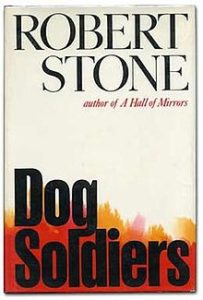
Robert Stone, Dog Soldiers
A portrait of the Sixties gone sour. A Vietnam war correspondent brokers a heroin deal through his merchant marine pal, Ray Hicks, to his wife waiting in Berkeley. But in California, the deal goes bad, and Hicks goes on the run, heading inland and passing through California’s festering underground scenes, trying to unload the dope on anyone who’ll pay. This is post-Manson California: turning from love and hope to paranoia and violence, fueled in large part by the shift toward hard drugs like heroin and amphetamines, much of it funneling through returned soldiers. Stone’s book was a seminal 70’s text and took home a share of the 1974 National Book Award.

Denis Johnson, Jesus’ Son
Addicts, misfits and strivers wander through Johnson’s 1992 collection of linked stories, which takes its title from the Velvet Underground’s “Heroin”— “When I’m rushing on my run/ And I feel just like Jesus’ son/ And I guess that I just don’t know.” Johnson’s narrator tells a wild, forking tale of poor decisions, jobs pulled, and loves lost. The suffering is extreme, graphic as anything in Burroughs’ Junkie, and filled with that same sense of spiritual loss in a warped subculture. This one isn’t strictly a crime story, but the book is steeped in the genre’s traditions and style.
Jesse Donaldson, The More They Disappear
Donaldson’s 2016 novel takes on the Oxy epidemic at the root. In Marathon, Kentucky, 1998, the local sheriff is killed. His deputy, Harlan Dupree, is lifted up in the ranks and charged with solving his predecessor’s murder. Dupree is clear-eyed about the problems his community faces: “Seems like every other person I arrest is hopped up on pills. I asked my brother who’s a cop out in Tucson if they have the same problem but he told me they have the cartels and we have Purdue and Pfizer.” Sure enough, his investigation leads to a web of Oxy addicts and dealers, including many of the town’s luminaries. Donaldson jumps from one perspective to another, exploring all sides of the epidemic as it spreads across the community; just about everyone in Kentucky, it seems, is looking for a way out through the supposed miracle drug.
James Lee Burke, Rain Gods
A grave is uncovered—nine bodies, women and children, the unfortunate victims of a human-and-heroin trafficking ring running across the border into South Texas. Hackberry Holland, the local sheriff, a man with demons of his own, leads the investigation, while Preacher, an arch-villain with a biblical bloodlust lurks at the periphery. Burke’s work has a rugged spirituality born out of its borderland setting and has rightly won his work comparisons to Cormac McCarthy’s. Good and evil do battle, men feed their appetites, and the women suffer.
Tony O’Neill, Sick City
A wicked portrait of junkie life and rehab culture on the West Coast. O’Neill’s Sick City revels in scam culture and aims to shock, but there’s a human portrait in there, too. Jeffrey and Randall, addicts from very different sides of LA, pair up for a score meant to keep them in dope for years to come: the sale of a legendary sex tape depicting a grisly intersection of Hollywood royalty. Sick City is a proud descendant of Burroughs and firmly part of the culture he helped enshrine.
John Burdett, The Godfather of Kathmandu
Burdett’s long-running Bangkok series is a truly uncanny outlier in the current landscape of global crime fiction. His stories, which straddle cultures, languages, and religions, are vivid hallucinations of daily life in Bangkok, where vice reigns and the locals are fiercely independent thinkers, beholden to no western codes of conduct or morality. In The Godfather of Kathmandu, Burdett’s part-Thai, part-American detective, Sonchai Jitpleecheep is caught up in a heroin smuggling ring that brings together Thai police, Tibetan exiles, Chinese loyalists, Americans on the prowl, and hustlers both local and international. The drugs touch all strata of society, and the long history of opium smuggling out of southeast Asia flashes through with a cruel, quick power.
Don Winslow, The Force
Winslow’s latest opus shines a light on the NYPD and the drug trade in the urban northeast, one of the hardest hit areas in the latest opioid epidemic. Denny Malone and the other detectives in the Manhattan North division carry themselves like gangsters and see to it they have a piece of everything illicit moving through the city. That means lots of drugs. (Denny is popping pills just about every hour of the day.) As Winslow made clear in a recent Lit Hub interview, he has some strong opinions about the effectiveness of the war on drugs, especially when it comes to heroin: “It should be legalized tomorrow. Yesterday if it could have been done. Or at least decriminalized. We’ve been doing the same thing for fifty years, and it hasn’t worked. Fifty years of the war on drugs and what’s the result? Drugs are cheaper, more potent, and more plentiful than ever.”


